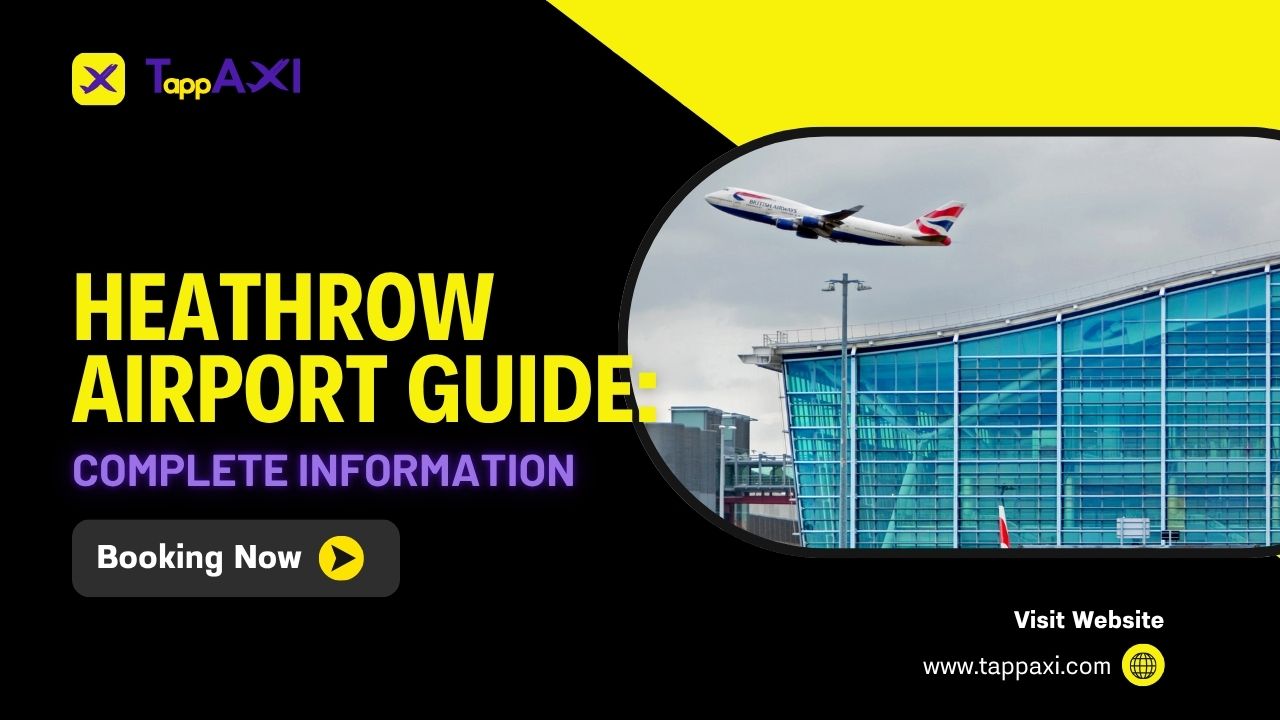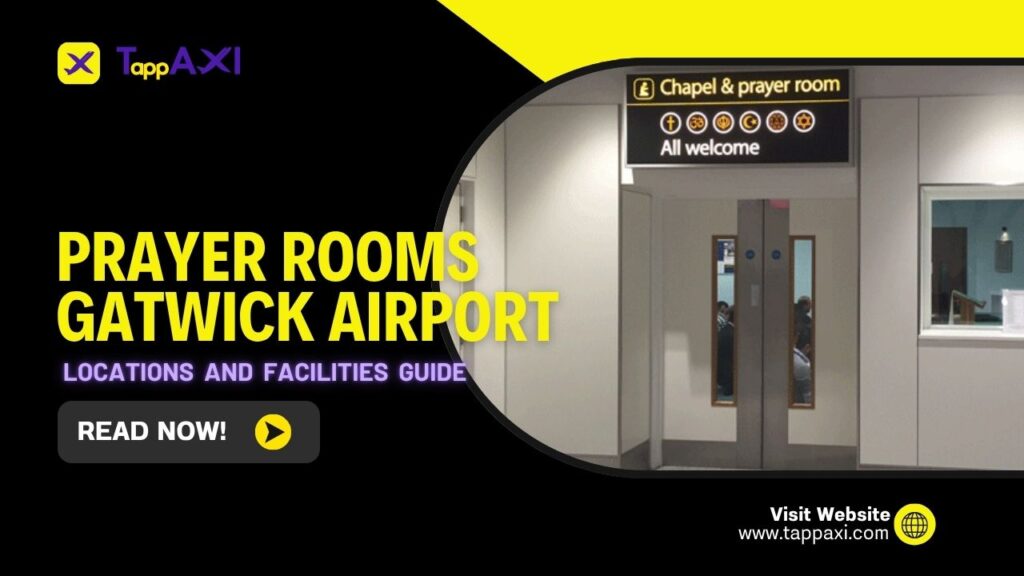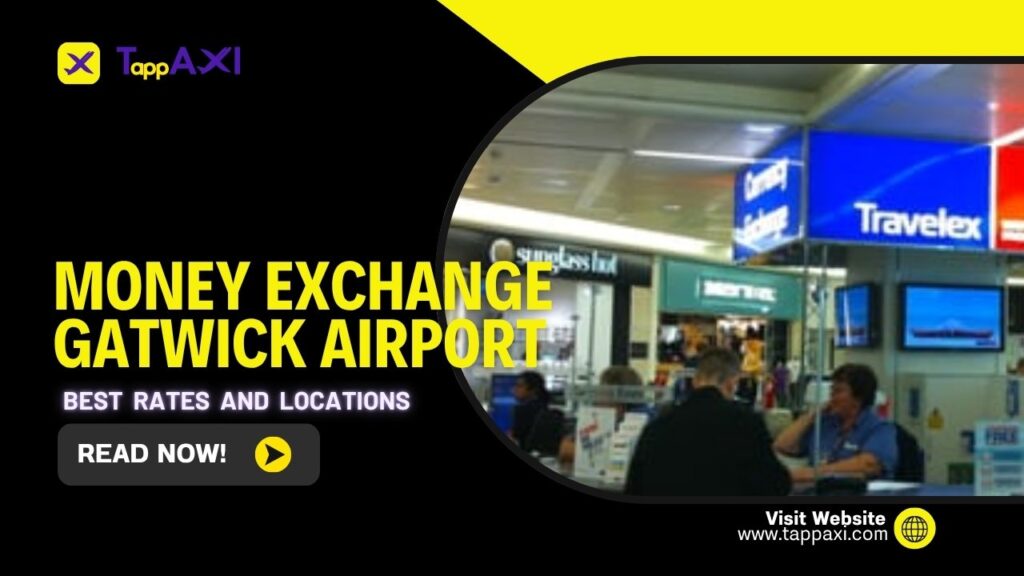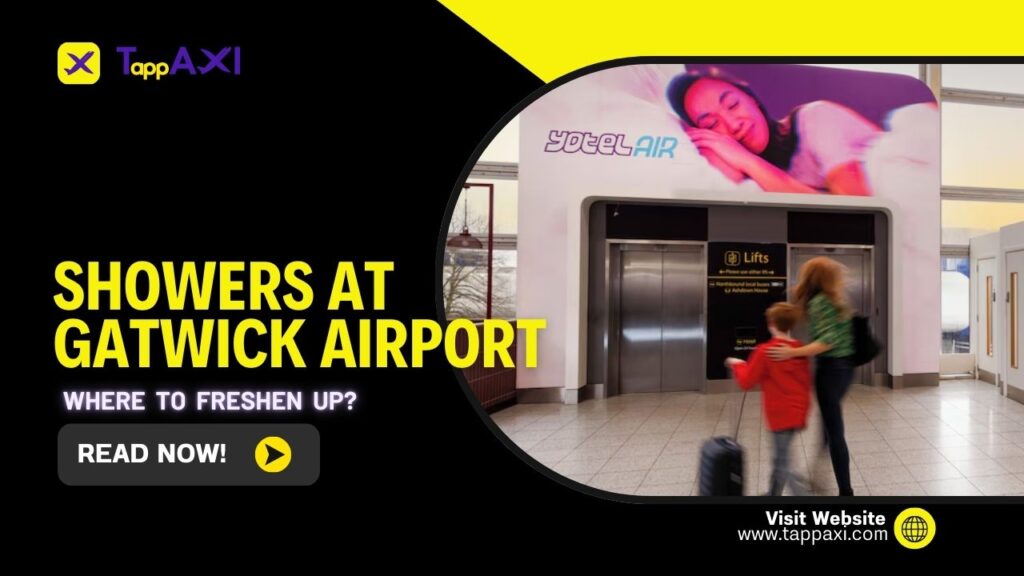London’s Heathrow Airport is a gigantic global hub. In fact, it handled a record 83.9 million passengers in 2024, surpassing its pre-pandemic peak. This makes Heathrow Europe’s busiest airport. Spreading across nearly 5 square miles of area, about 14 miles west of central London. Heathrow functions like a “mini-city” with its own shopping malls, hotels, lounges, and transit systems.
It’s far more than just a transit point. Travelers can shop luxury boutiques, relax in spas or lounges, dine at dozens of restaurants, and even sleep at an in-terminal hotel.
Let’s discuss everything you need to know about Heathrow. From arrival and departure tips, terminal layouts, transfers and transport (including how TappAXI’s Heathrow Transfers can make your ground transfer seamless), to special facilities and travel hacks.
WHERE IS HEATHROW AIRPORT & WHY IT MATTERS
Heathrow’s Location
Heathrow Airport (IATA code LHR) is located in West London, about 14 miles (23 km) west of Central London in the Borough of Hillingdon. It’s easily recognizable on tickets and signage by the code “LHR.” Despite being outside central London, it’s well connected by rail (Heathrow Express, Elizabeth Line, London Underground) and road.
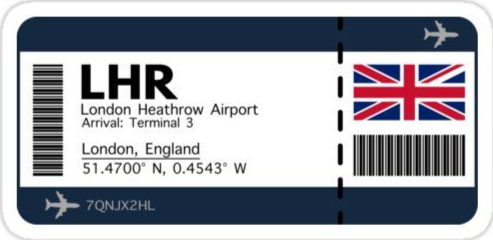
Scale & Connectivity
Serving as the U.K.’s main international gateway, Heathrow handled approximately 83.9 million passengers in 2024, an increase of ~6% over the previous year. That’s roughly 230,000 travelers per day moving through its terminals. Heathrow hosts 90+ airlines flying to 230+ destinations across nearly 90 countries, making it one of the most globally connected airports.
OAG rankings consistently place Heathrow among the world’s top 5 busiest airports and the most internationally connected airport. It was also officially Europe’s busiest airport in 2024 by passenger volume.
Get Instant Heathrow Airport Taxi Quotes Now
Why advance planning matters for Heathrow
With such high traffic, Heathrow can get congested. At peak times, you may encounter delays, long security queues, and terminal transfers that require careful timing. Its two runways run at full capacity, so any disruption (weather, strikes, etc.) can cascade.
High volume also means ground transport, trains, buses, and especially taxis, can be in demand. It’s wise to plan your transfers (e.g., pre-book a taxi or ride) to avoid scrambling for transport in the crowd. Knowing which terminal you need and how to get there is crucial, as the terminals are far apart.

AIRPORT TERMINALS GUIDE
Heathrow has four active passenger terminals: Terminals 2, 3, 4, and 5. (Terminal 1 was closed in 2015.) Each terminal hosts specific airlines and destinations, so you should know which one your flight uses. Below is an overview of each terminal, including notable airlines, lounges, and amenities:
Terminal 1 (Closed in 2015)
Terminal 1 is no longer in operation, it closed on 29 June 2015 after 47 years of service. On its final evening, the last flight to depart T1 was a British Airways service to Hanover (Hannover), which left around 9:30 pm on June 29, 2015.
Terminal 1 primarily handled UK and European short-haul flights (it was once the busiest short-haul terminal in Western Europe) and, at full capacity, saw ~9 million passengers a year.
After closing, its airlines were moved to Terminal 2 or other terminals. The old T1 building is not used by the public now. It’s cordoned off and scheduled to be demolished to make way for the future expansion of Terminal 2 in the 2030s. We include Terminal 1 here for historical context only. If your ticket ever says “T1,” it’s outdated (check with your airline; in practice, no flights use Terminal 1 today).
Tips: If you’re getting picked up or dropped off, don’t go to Terminal 1. There are no passenger services there. All taxi drivers and transport services (including TappAXI) now use Terminals 2–5 only.
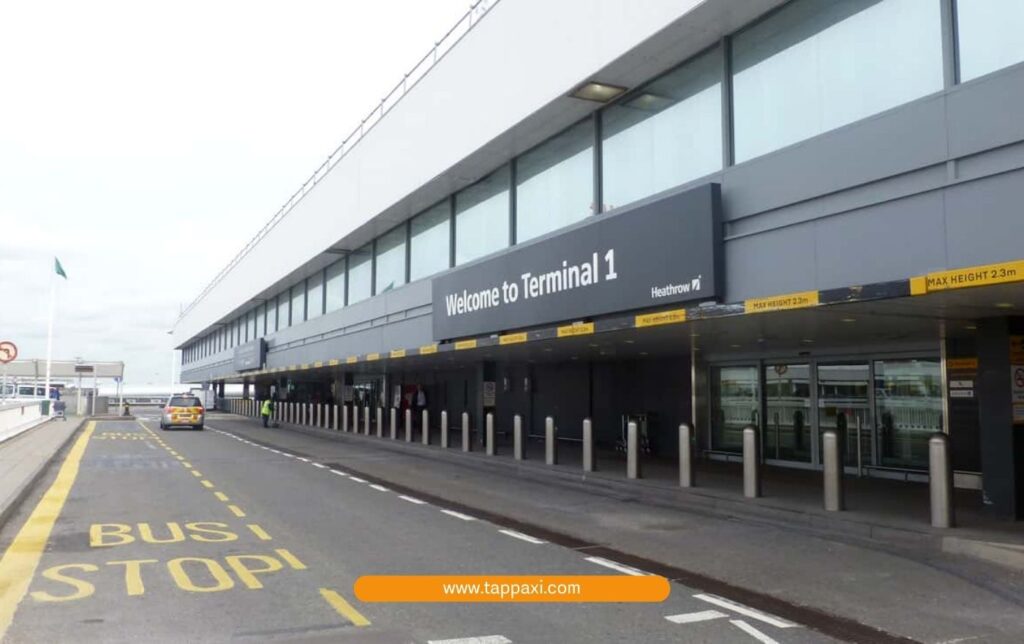
Terminal 2 – “The Queen’s Terminal”
Airlines & Use
Terminal 2 is Heathrow’s newest terminal (opened in 2014) and is dominated by Star Alliance carriers. Over 20 Star Alliance member airlines operate from T2, earning it the nickname “Star Alliance Terminal”.
This includes major carriers like United Airlines, Air Canada, Singapore Airlines, Lufthansa, ANA, Thai, Air India and many more. Aer Lingus (not Star Alliance but a partner airline) also uses T2.
If you’re flying with a Star Alliance airline or certain partner airlines, you’ll likely depart from Terminal 2. Always check your booking. Heathrow’s airline-terminal assignments are mostly fixed (e.g. all United flights are T2) with few exceptions.
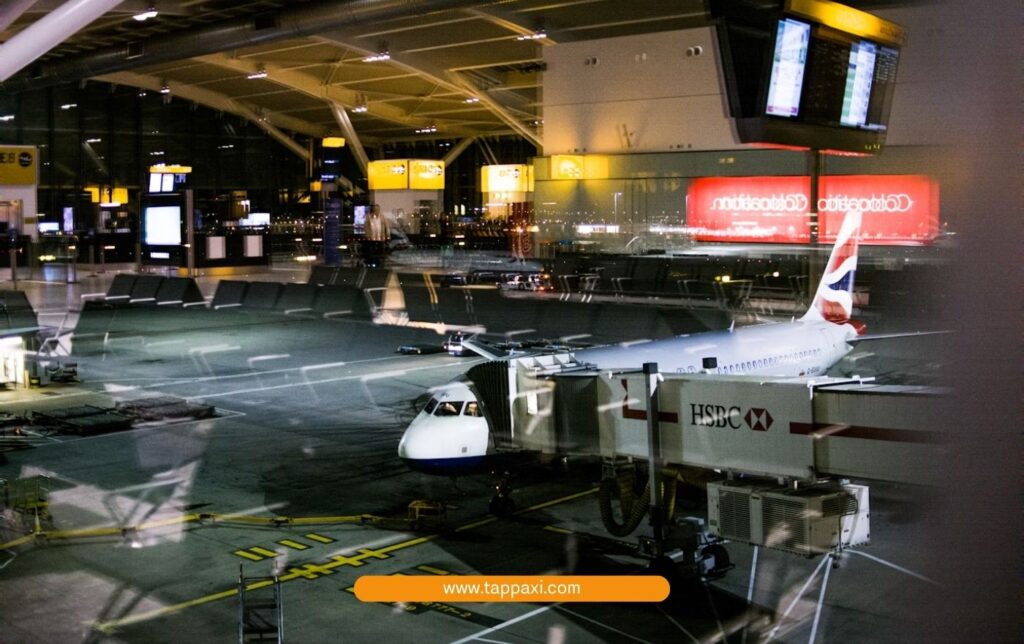
Design & Layout
Terminal 2 was built with a modern, airy design, lots of natural light, high ceilings, and efficient layout. Check-in is split across multiple zones and levels, and a central security area handles all departures.
Despite being large, T2 is well-signposted and relatively compact. It consists of a main terminal (T2A) and a satellite pier (T2B) connected by a walkway. Gates numbered in the A1–A26 range are in the main building, while B gates (B31–B49) are in the satellite (accessible via a tunnel walk).

Lounges
- Airline Lounges: Lufthansa operates a lounge in the main T2 (for its premium passengers and Star Alliance Gold). In the T2B satellite, United, Air Canada, and Singapore Airlines each have their own lounges.
- Independent Lounges: Terminal 2 has a Plaza Premium Lounge (open to any traveler via pay-at-door or membership) in the departures area. There is also a Club Aspire lounge (pay-per-use, often accessible via Priority Pass), sometimes referred to as the “Canopy” lounge by some sources.
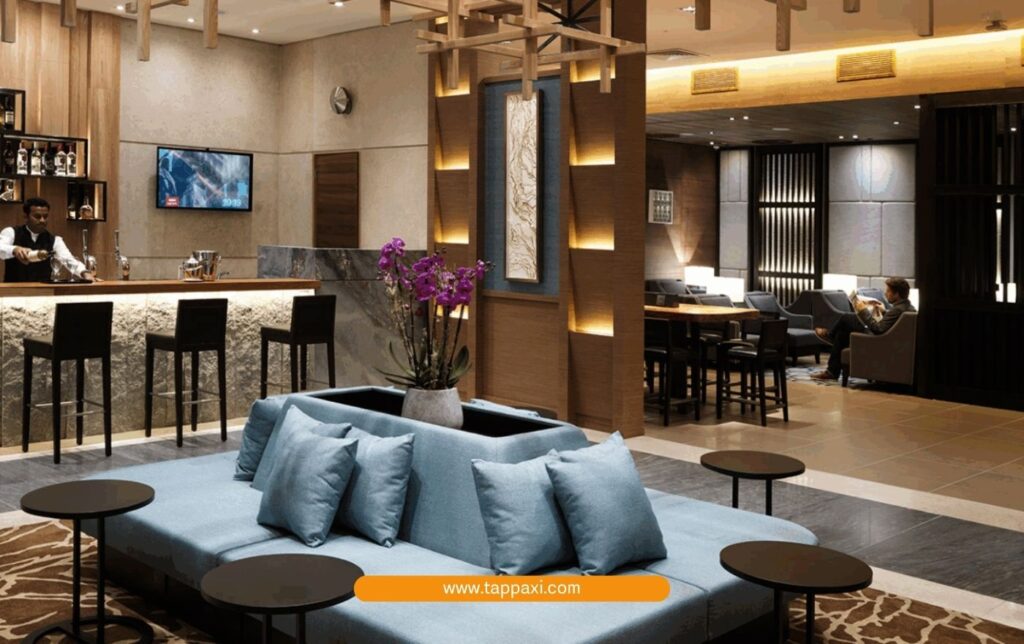
Dining & Amenities
You’ll find a good mix of restaurants and shops in Terminal 2. Notable eateries include The Perfectionists’ Café by a celebrity chef (for a quick gourmet bite), a London Pride pub (Fuller’s brewery), and international options from Italian to sushi.
There’s a spacious duty-free shopping area with luxury brands and high-street staples. Terminal 2 also has “smart” restrooms and other innovations. For example, monitors by some restrooms use barcode/QR code tech for feedback, keeping facilities clean. Free Wi-Fi is of course available (more on that later).
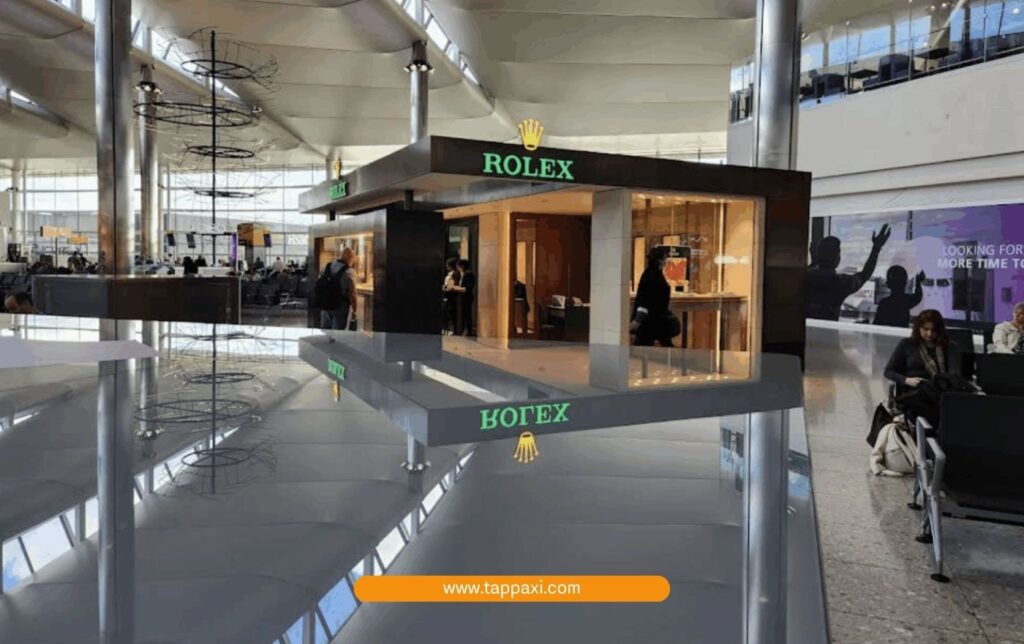
Transfers
T2 is adjacent to Terminal 3, and they share the Heathrow Central rail station (for the Heathrow Express and Elizabeth Line). It’s about a 5–10 minute walk via underground pedestrian tunnel to reach the station from T2.
Signage for “Trains to Central London” will lead you there. If you need to transfer to Terminal 5 or 4 from T2, you can take the free inter-terminal train from the station.
TappAXI also covers T2 for their airport transfer services.
Get Instant UK Airport Taxi Quotes Now
Terminal 3
Airlines & Use
Terminal 3 hosts a diverse mix, primarily long-haul international airlines and some Oneworld alliance members:
- It’s one of British Airways’ secondary hubs. While BA’s main home is T5, a number of BA flights (including some European and mid-haul routes) operate from T3, especially since 2022 when BA shifted a few operations here. BA’s sister airline Iberia also moved to T3 in 2022. This means T3 is now an IAG hub alongside T5.
- Many Oneworld alliance airlines use T3. For Example, American Airlines historically was in T3. Cathay Pacific, Qantas, Japan Airlines, Royal Jordanian, Finnair, SriLankan Airlines. These Oneworld carriers typically operate from T3. (One exception: Qatar Airways, also Oneworld, uses T4 along with its partner Qatar-owned carriers.)
- Virgin Atlantic calls Terminal 3 home, along with its partner Delta Air Lines (SkyTeam). Virgin has a dedicated “Upper Class Wing” check-in at T3 and its flagship Clubhouse lounge here. Delta moved all its Heathrow flights to T3 as well to co-locate with Virgin.
- Other major long-haul carriers in T3 include Emirates (which uses multiple A380s daily to Dubai), Iran Air, LATAM, Vistara, Beijing Capital Airlines, and previously some SkyTeam airlines during T4’s closure. (Air France/KLM were in T3 temporarily in 2020-22 but moved back to T4 in 2023.)
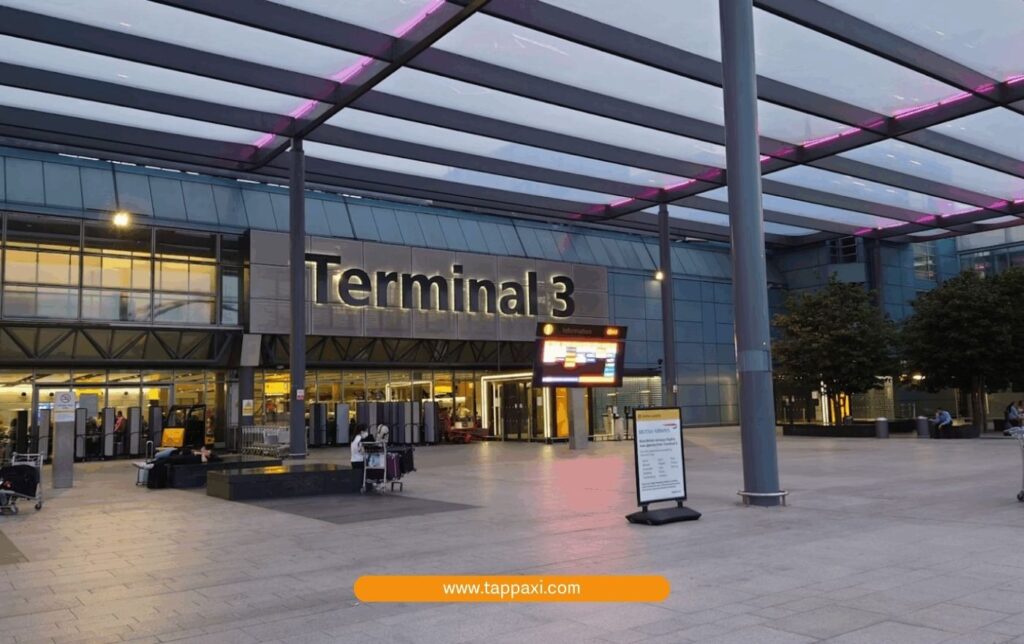
Layout & Access
Terminal 3 is one of Heathrow’s older terminals (opened 1961, expanded over time) but it’s been refurbished over the years. It has a central check-in area leading to a large security hall, after which you emerge into a central airside “duty-free mall”. From there, departure gates spread out in different hallways.
Some gates (e.g. 20s) are a longer walk through a tunnel. T3 is connected by walkway to the Heathrow Central bus and train station (for Underground, Elizabeth Line, Heathrow Express). It’s about a 10 minute walk via underground passages to reach the station from T3. Follow signs to “Trains” or “Underground” and Heathrow Terminal 2/3 station.
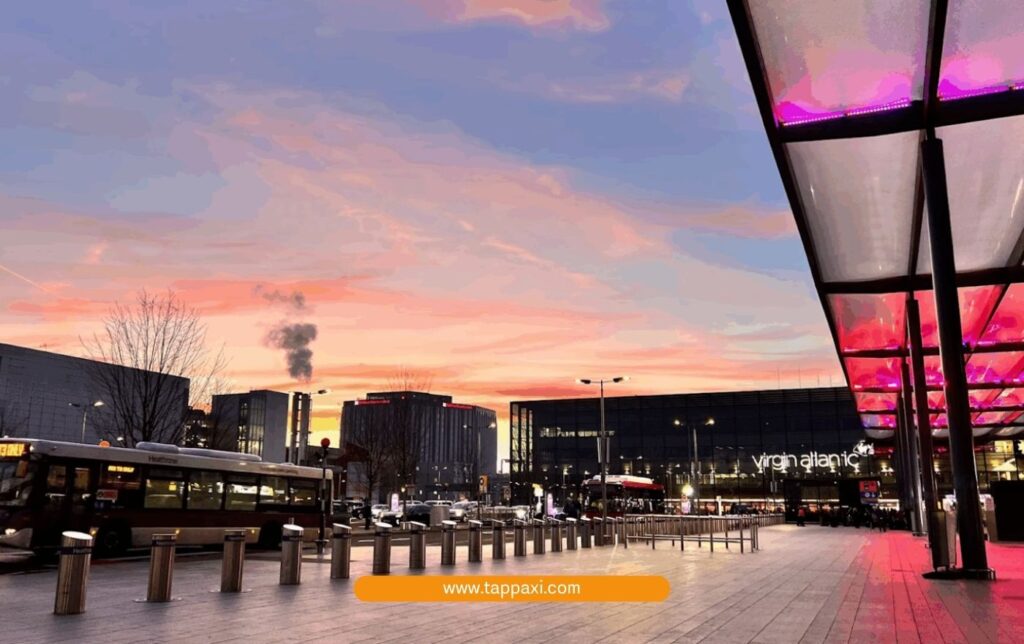
Lounges
Terminal 3 is known for having excellent lounges, especially for premium travelers, because of the number of flagship airlines there:
- The Virgin Atlantic Clubhouse in T3 is often rated one of the best airline lounges in the world, featuring a la carte dining, a cocktail bar, spa treatments, even a rooftop terrace and quirky amenities. It’s accessible to Virgin’s Upper Class passengers and some Delta/Aeromexico elite passengers.
- T3 has both Cathay Pacific lounges, a Qantas London Lounge, and an American Airlines Admirals Club. Many frequent travelers actually prefer to depart from T3 just to do a “lounge hop” because Cathay’s and Qantas’ lounges there are superb. British Airways also has Galleries Club and First lounges in T3 for BA and Oneworld elites.
- Emirates Lounge: Emirates operates its own lounge for first/business passengers in T3, given its significant presence (6 daily flights). Other carriers like Etihad used to have a lounge when they were in T3 (Etihad has since moved to T4 with its lounge there).
- Independent Lounges: There are pay-for-entry lounges like No1 Lounge and Club Aspire in Terminal 3 (often in Lounge Area F near Gates 13-22). These can be accessed with Priority Pass or a fee. Offering basic comforts (snacks, drinks, Wi-Fi, quiet space) if you don’t have airline lounge access.
Dining & Amenities
Terminal 3’s central departures hall has a large duty-free store and a cluster of dining outlets. You’ll find everything from casual cafes and a food court to pubs and sit-down restaurants. For example, there’s Pret a Manger for quick sandwiches, YO! Sushi, Burger King, Oriel French bistro, and The Curator bar.
A “late departures” area offers seating and some 24-hour concessions for those red-eye flights. The vibe can be lively, especially evening when many long-haul flights depart. Seating can get tight at busy times, but there are some quiet corners around certain gates (e.g. near gates 1-4 area).
TappAXI usually picks you up from the arrival hall within 15 minutes after you notify your driver from the app. Read more about the T3 airport transfers.
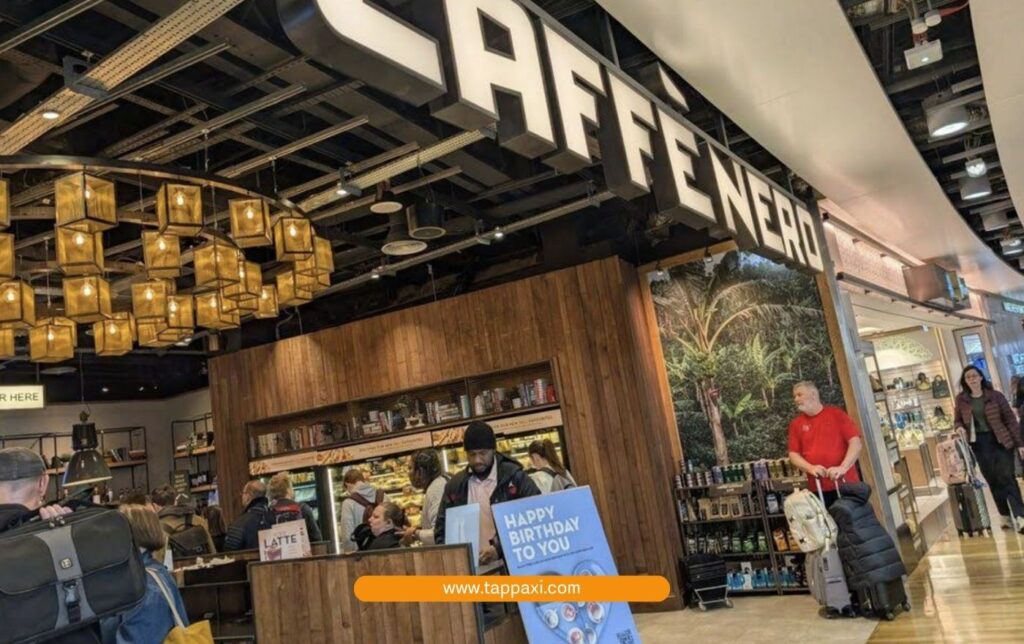
Terminal 4
Airlines & Use
Terminal 4 is located on the south side of the airport (separate from T2/3/5 cluster). It primarily serves SkyTeam alliance and certain Middle Eastern and other non-aligned carriers:
- SkyTeam: T4 is the base for most SkyTeam member airlines at Heathrow. This includes Air France, KLM, Aeroflot (when operating), China Eastern, Saudia, Korean Air, Vietnam Airlines, Kenya Airways, etc. However, a few SkyTeam partners use T3 instead. Specifically Aeroméxico, Middle East Airlines (MEA), China Airlines, and Virgin Atlantic are out of T3. Delta was based in T4 until 2016, then moved to T3 for Virgin connections. Now with Virgin Atlantic joining SkyTeam in 2023, SkyTeam is split: most European SkyTeam (AF/KL etc.) in T4, while U.S./Mexico SkyTeam in T3.
- Gulf/Middle East & others: Several major non-allied airlines are in Terminal 4. Notably Qatar Airways, Etihad Airways, Gulf Air, Oman Air, Kuwait Airways, Royal Brunei, Iran Air, Biman Bangladesh, Air Astana, Uzbekistan Airways, Azerbaijan Airlines, Air Algerie, Tunisair, Air Serbia, Bulgaria Air, WestJet. These are examples of carriers using T4. Malaysia Airlines is also at T4 as is Royal Air Maro. Making T4 a bit of a mixed alliance zone for certain regions.
Terminal 4 handles a lot of Asia, Africa, and Middle East flights outside of Europe. If you’re flying to those regions on non-BA/non-Virgin airlines, T4 is likely.
Get Instant UK Airport Taxi Quotes Now
Layout & Access
Terminal 4 has its own entrance and approach roads (just off the M25 Junction 14). It’s connected to the other terminals by the free Heathrow rail service or by road. There is a Heathrow Terminal 4 train station (served by the Elizabeth Line and Piccadilly Line) and during intra-terminal transfers, you typically must take a train to T2/3 and possibly onward to T5.
The inter-terminal transfer from T4 requires going to T2/3 first (by train or bus). There’s a shuttle train running every 15 minutes or so (free if you get an inter-terminal ticket or use contactless which charges £0 within Heathrow).
Or, Heathrow runs free connecting buses between T4 and T5. Keep in mind, transferring from T4 to other terminals takes extra time (around 20–30 minutes at least including waiting time), so plan accordingly if you have a connection.
Terminal 4’s departures is on Level 2 with check-in rows A–H, and security leading to a central airside area. The departure gates radiate out from a long concourse. It’s a bit smaller in capacity than T3 or T5, so it can feel less crowded and often quicker to exit upon arrival.

Lounges
T4 has a number of airline lounges, given the many premium international carriers:
- The SkyTeam Lounge (which was a shared lounge for SkyTeam airlines) opened in 2009. However, SkyTeam’s branded lounge in T4 has not reopened post-pandemic and is permanently closed. Instead, SkyTeam elite passengers now use either the Plaza Premium Lounge in T4 or other partner lounges.
- There is a Plaza Premium pay-per-use lounge in Terminal 4 (open to all for a fee or membership). It offers food, drinks, showers, and quiet space.
- Airline Lounges: Many individual carriers have their own lounges in T4:
- Etihad Airways Lounge – for Etihad’s Business/First passengers.
- Malaysia Airlines Golden Lounge – for MH’s premium flyers.
- Qatar Airways Premium Lounge – a high-end lounge for Qatar’s Business/First (Qatar invested in a luxury lounge at LHR)
- Gulf Air Falcon Gold Lounge
- El Al King David Lounge
- And some smaller lounges for some others or contract arrangements.
Many of these lounges are located on an upper level of the departures area.
Dining & Amenities
Terminal 4 features a variety of dining options, though on a smaller scale than T5 or T3. After security, there’s a “World Duty Free” store and a range of eateries:
- The Prince of Wales pub (a classic British pub) is a go-to for breakfast or a pint, open 05:30 until last flight.
- Caviar House & Prunier Seafood Bar offers oysters, caviar, and Champagne for a luxurious treat.
- Cafe Nero (landside, 24h) and Costa Coffee are available for coffee and quick bites
- The Commission (a brasserie by Drake & Morgan) is a sit-down restaurant in departures.
- Asian cuisine: Terminal 4 has an Asian outlet called “Hakka” or “Skyline”, and a Giraffe World Kitchen for family-friendly global food.
- Fast bites: Pret a Manger (healthy sandwiches) is open 6:00–21:00
Overall, T4’s dining covers “flavors from all over the world” from quick service to upscale. Given fewer flights than T5, seating is usually available.
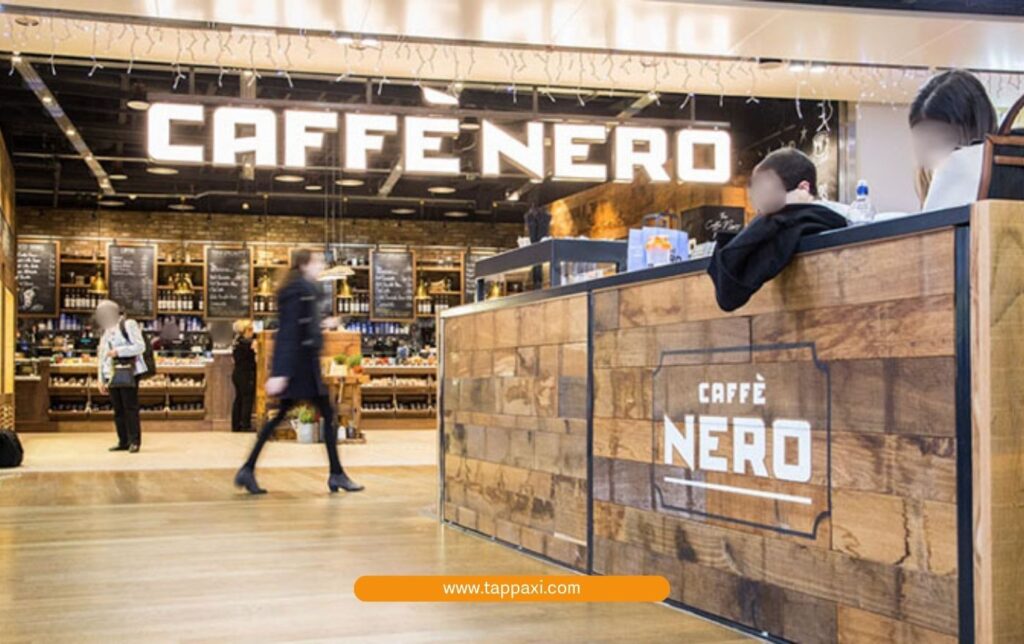
Getting in/out
If you’re arriving at T4, note that pickups by car/taxi occur at the arrivals forecourt outside. And for public transit, you may need to take the Piccadilly Line or Elizabeth Line to central London (around 30–50 minutes). Drivers picking up from T4 should allow some extra time due to its separate location.
Also, if you are connecting from a Terminal 4 arrival to a flight in T5 or T2/3, budget a minimum 90 minutes connection time (and follow the purple “Flight Connections” signs to use Heathrow’s airside bus if eligible, or go landside and use the free train).
TappAXI also covers terminal 4 for airport transfers.
Terminal 5
Airlines & Use
Terminal 5 is Heathrow’s largest and flagship terminal, opened in 2008. It is home to British Airways. T5 is almost entirely a BA hub (plus some Iberia operations). Specifically:
- British Airways (BA) operates the majority of its flights from Terminal 5. All BA domestic, European, and many long-haul flights use T5 (except those few that depart T3). BA alone uses T5 so heavily that it occupies all T5 concourses (A, B, C).
- Iberia, BA’s partner (and part of IAG), also uses Terminal 5 for many flights, especially since Iberia joined BA in the transatlantic joint business. (During 2022, Iberia had moved to T3, but as of now some Iberia flights are back in T5 to facilitate connections. Check your flight info, but assume T5 for IB unless told T3.)
- Notably, American Airlines has moved some flights to Terminal 5 as well. This co-location with BA is to allow easier connections for oneworld passengers. So if you’re flying American Airlines to JFK, for example, you might depart from T5 now. (AA used T3 traditionally, but as of 2023 many AA flights use T5, potentially permanently.)
Other than those, no other airlines use T5 (with the small exception of a few Iberia Express or Vueling flights that might use T5 when operated for BA). Essentially, if you’re on BA or a partner code-share, think Terminal 5.
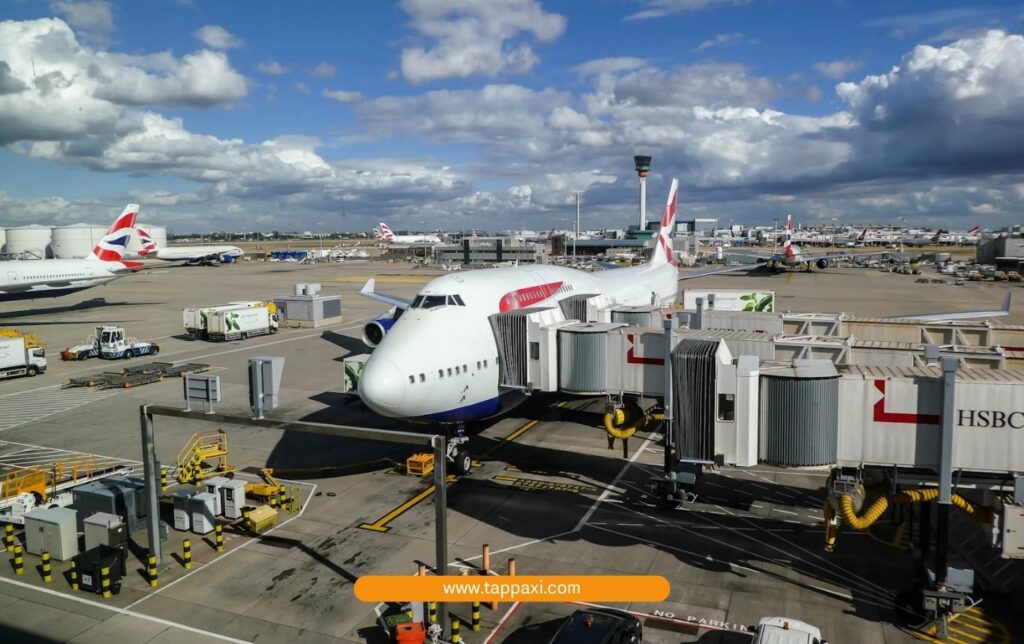
Terminal 5 Complex
T5 actually has three connected terminal buildings: T5A (the main central terminal where check-in, security, and most facilities are), and two satellite concourses T5B and T5C (also called T5 “Building B” and “Building C”) which house additional gates. Gates in the A gates (e.g. A10-A23) are in the main building, B gates (B32-B48) in the T5B satellite, and C gates (C52-C66) in T5C.
An underground shuttle train connects T5A ↔ T5B ↔ T5C, or one can walk (underground walkway) to T5B/C in ~10-15 minutes. BA operates from all three, so your gate could be in any, but security and check-in are all in T5A main hall.
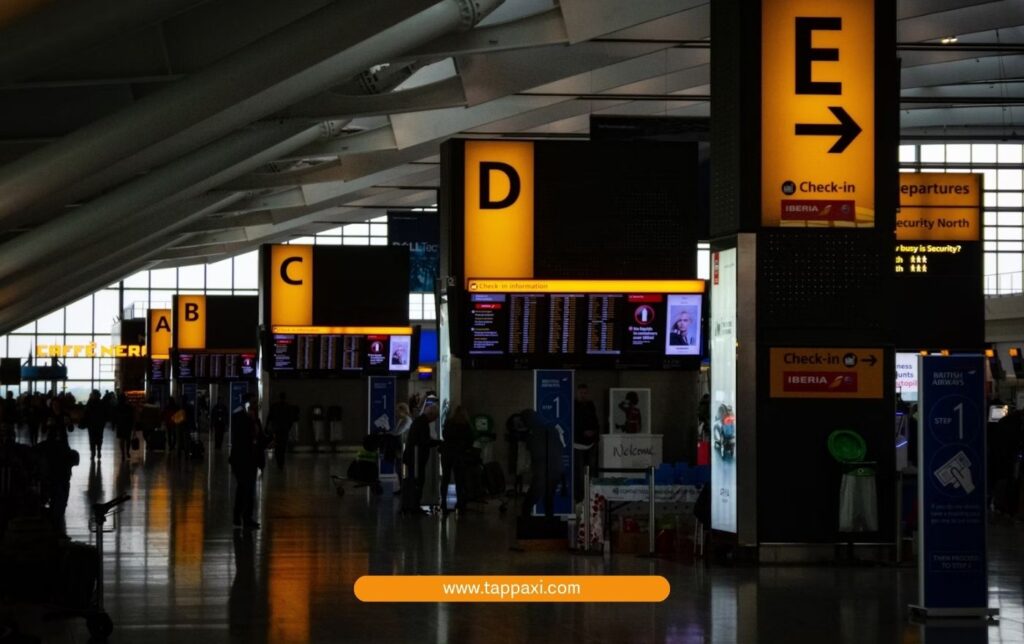
Layout & Access
Terminal 5 is very modern, spacious, and filled with natural light. The main departure hall (T5A) has huge floor-to-ceiling windows and a multi-level shopping/dining atrium. You’ll find dozens of shops. From high-end luxury brands (Gucci, Chanel, Burberry, Hermes) to travel essentials (Boots pharmacy, WHSmith books), and duty-free. It feels like a high-end mall. Dining options range from quick to gourmet:
- Notably Gordon Ramsay’s Plane Food, a full-service restaurant by the celebrity chef, is popular for sit-down meals (and even offers take-away picnics for your flight).
- Wagamama (Asian noodles), Itsu (sushi), Pret a Manger (sandwiches), Starbucks, Caffè Nero, Pilots Bar & Kitchen by Rhubarb (with runway views) are among choices.
- For a splurge, there’s a Fortnum & Mason Champagne Bar and a Caviar House oyster bar in T5.
- Casual pubs like The Crown Rivers (Wetherspoon) for a pint and fry-up.
Lounges
As BA’s home, Terminal 5 has multiple British Airways lounges:
- Galleries Club Lounges: There are North and South Club lounges in T5A (for Business class and Silver/Gold elites), plus a Galleries lounge in T5B satellite. These offer buffets, bars, work areas, and showers.
- Galleries First Lounge: For BA First Class passengers and Gold members, located in T5A (South).
- The Concorde Room: BA’s most exclusive lounge (T5A), for First Class ticket holders and very top-tier customers, featuring full table service dining, a terrace, and cabanas.
- Arrivals Lounge: Outside customs in T5 there’s a BA Arrivals Lounge (with showers and breakfast) for premium passengers arriving from long-haul, open mornings.
- Independent Lounge: Terminal 5 also has a Plaza Premium Lounge and a Club Aspire Lounge available to any passenger for a fee or membership. The Club Aspire Lounge in T5 is noted to even offer sleep pods and showers for an extra fee. Handy if you need a nap or freshen up.
With these lounges, frequent flyers in T5 have plenty of space to relax. For those without access, T5’s public areas have lots of seating, including some quieter lounges near gates A7 and A18 with views of the runway. There is also an official Heathrow “View Heathrow” observation deck near Gates A15-16 with 270° runway views and binoculars. A nice spot for aviation enthusiasts or if you have kids to entertain.

Fast-Track & Efficiency
Terminal 5 was designed for quick processing. Security lines, though busy, are well-managed (BA proudly reports stable queuing times). There are fast-track lanes for premium passengers. Immigration has a bank of the automated eGates for UK/EU and eligible nationals, which speeds up arrivals. Baggage claim is generally efficient, though during peak times it can still take time due to volume.
Transfers & Transport
T5 has its own train station (for both Heathrow Express and Elizabeth Line) directly below the terminal. The Heathrow Express gets you to central London in 15 minutes (to Paddington), while the new Elizabeth Line (Crossrail) offers direct trains through central London (around 30-35 minutes to key stops). Very convenient and cheaper.
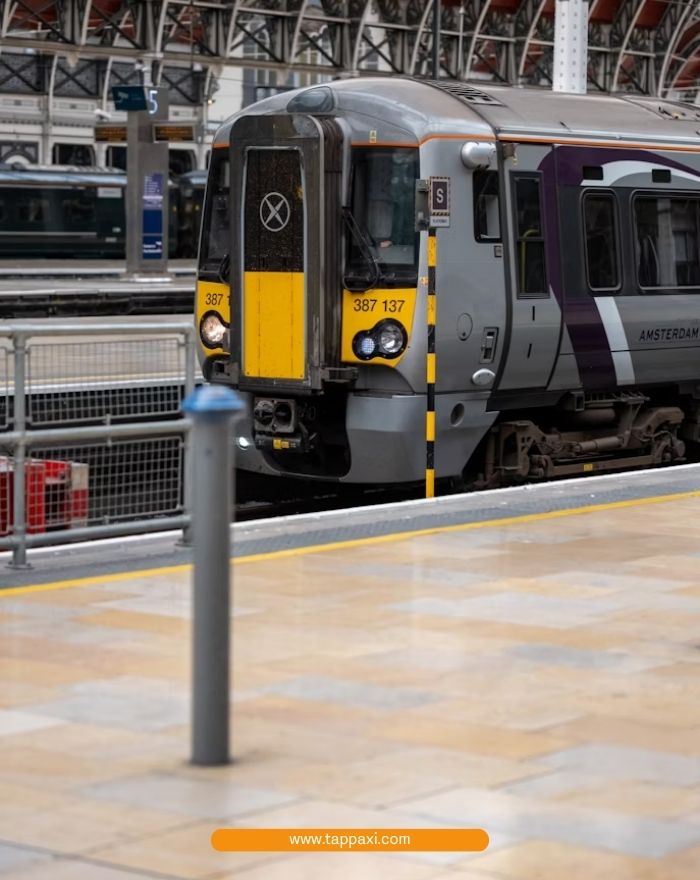
The Piccadilly Line also has a station at T5 for the London Underground (approx 50 minutes to central London, but very cheap). For inter-terminal, T5 connects to T2/3 via free rail service (or bus 482/490).
If taking a taxi from Terminal 5, the drive to central London can be ~45–60 minutes depending on traffic (longer at rush hour). T5 has dedicated taxi ranks outside arrivals. One advantage of T5 is that traffic is separated from the central terminals, so sometimes roads are a bit clearer.
Get Instant UK Airport Taxi Quotes Now
HEATHROW FACILITIES & SERVICES
Heathrow is well-equipped with traveler facilities. From practical services like free Wi-Fi and baggage storage to creature comforts like showers and lounges, here’s what you need to know:
FREE WI‑FI AT HEATHROW AIRPORT
Heathrow offers free, unlimited Wi-Fi access throughout all terminals. The network name (SSID) is “_Heathrow Wi-Fi” (note the underscore). This complimentary service is available in both public areas and post-security lounges and gate areas.
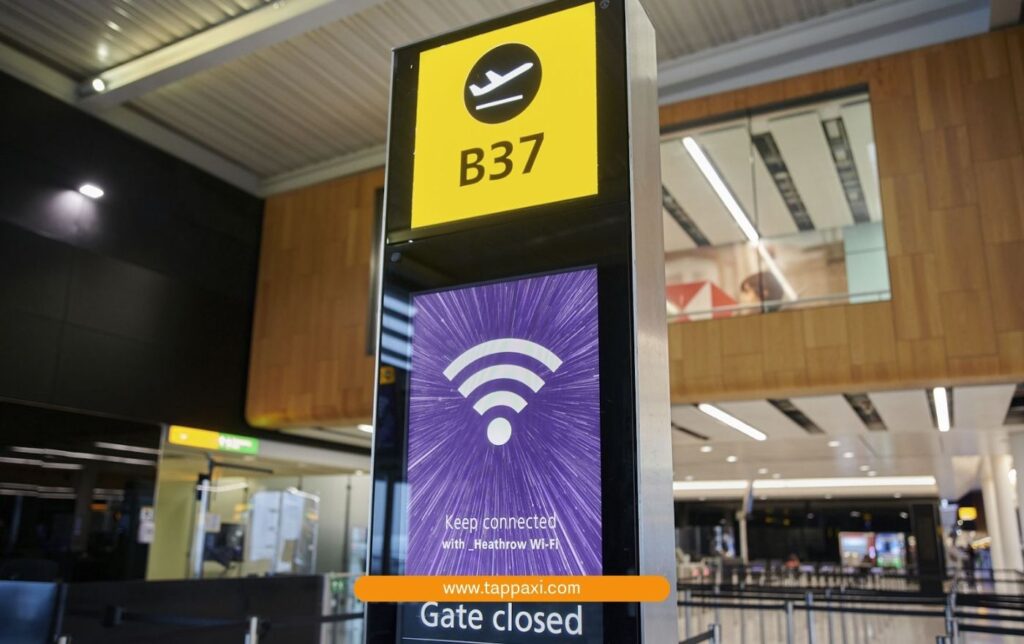
How to Connect
To get free Wi-Fi at Heathrow Airport, simply follow the easy steps. Enable Wi-Fi on your phone/tablet/laptop and select “_Heathrow Wi-Fi” from the network list. Once connected, open your web browser. It should redirect to the Heathrow Wi-Fi welcome page.
You’ll typically be asked to accept the terms and conditions (and optionally enter an email or watch a short ad). After acceptance, you get access for the duration of your visit. In our experience, the connection is truly unlimited. There is no 45-minute or 4-hour cap as some airports have.
However, note a couple of tips:
- Sometimes the system might require a re-registration every 4-6 hours just to ensure you’re still there (e.g. a prompt might pop up after 90 minutes asking you to click “continue”). It’s quick to do.
- Signal strength is usually strong, but can be weaker in very remote gate areas. For best results, sit near main concourses or gates with signage, the Wi-Fi antennas are often located there.
- If you have trouble connecting, Heathrow customer service staff can assist. Also, there are pay-for-premium options (like Boingo or Heathrow’s faster tier) but for most needs, the free Wi-Fi is quite sufficient.
Overall, travelers rate Heathrow’s Wi-Fi highly, it’s convenient for downloading your emails, streaming some video, or getting work done during a layover. Just connect once and you’re set.
SHOWERS & DAY‑ROOMS
Long flight and need to freshen up? Heathrow has several options for showers and even short-stay hotel rooms without leaving the airport:
Aerotel London Heathrow (Terminal 3 Arrivals)
Aerotel is an in-terminal transit hotel located inside Terminal 3 (landside, arrivals level). It offers private rooms by the hour, with beds, private bathroom with shower, TV, and workspace. This is ideal if you have a long layover or early arrival and want to nap or shower in privacy. Rates are by hours (e.g. 3-hour, 6-hour packages).
You can walk to Aerotel directly from T3 arrivals, if you’re in another terminal, you’d need to transfer to T3 (remember to allow time to re-clear security if you are going back airside). Booking ahead is recommended (it can fill up). Aerotel provides towels, toiletries, essentially a mini hotel experience inside the airport.
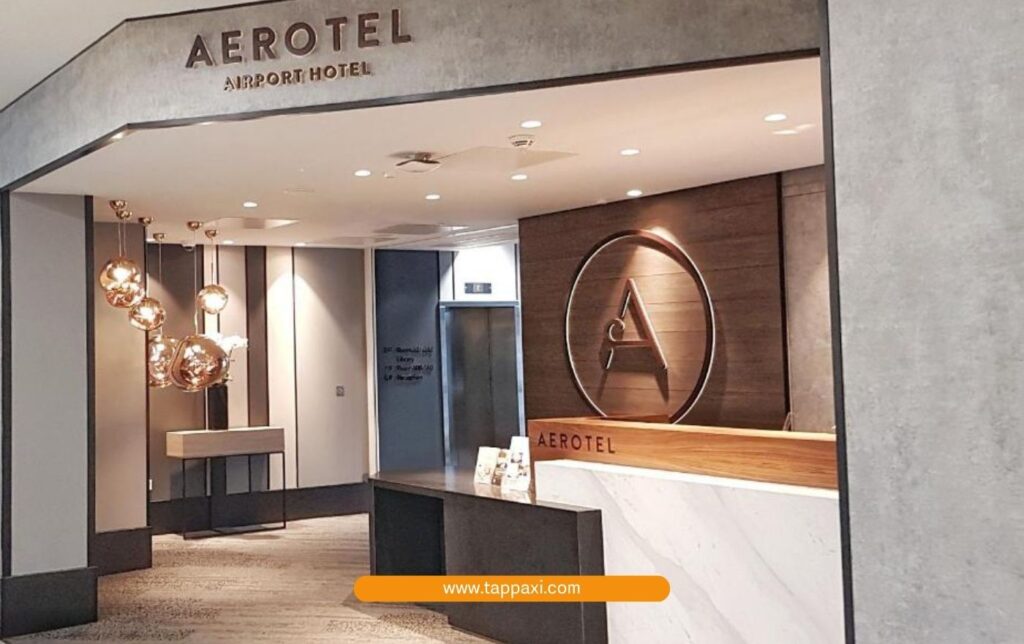
Lounges with Showers
Many airline and independent lounges have shower facilities. If you have access to a lounge (through business/first class or memberships), you can typically use their showers for free. For example, Plaza Premium Lounges (T2, T4, T5) have showers available. Club Aspire Lounge in T5 offers showers for a fee (around £20) even if you’re not in business class.
The BA Galleries Lounges in T5 and BA Arrivals Lounge also have showers (complimentary for entitled passengers). So, consider a lounge pass if a shower is a priority.
Public Shower in Arrivals
There used to be a public shower in Terminal 3 arrivals (operated by Excess Baggage), but currently the main options are via lounges or Aerotel. If in Terminal 4, the Plaza Premium lounge is your best bet for a paid shower. In Terminal 2, Plaza Premium lounge (in T2 arrivals and departures) has showers as well.
Get Instant UK Airport Taxi Quotes Now
LEFT‑LUGGAGE & LOCKERS
Need to store bags for a while? There are baggage & luggage storage at Heathrow Airport in each terminal, operated by the Excess Baggage Company. This is useful if, say, you have a day in London and don’t want to drag suitcases, or if you have items you can’t take through security on a short trip.
- Locations: There are left luggage facilities at Arrivals (ground floor) of Terminals 2, 3, 4, and 5. For example, in T2 it’s in the main Arrivals concourse; in T3, in Arrivals near domestic exit; T4 at the west end of Arrivals hall; T5 at the UK Arrivals end of the hall.
- Hours: Most are open from about 05:00 or 06:00 until 23:00 daily. Some terminals’ storage might have slightly different hours, but generally cover early morning to late night.
- Cost: Prices are charged per bag, typically based on duration. As of recent info, the standard Heathrow rates are around:
- 0–3 hours: £10 per bag
- 3–24 hours (1 day): £15 per bag
- 24–48 hours: £25 per bag
- 48–72 hours: £35 per bag, and so on (they might charge +£10 for each additional 24h period beyond that).
These rates can change, but expect roughly £15 per bag per day as a ballpark.
It’s not cheap, but it’s secure and convenient. Each item is tagged and x-rayed for security before storage.
- Restrictions: They can store most suitcases, bags, backpacks. Very large items (skis, bicycles) may be accepted too, check with them. There might be additional handling fees for oversized items. They won’t accept perishable or dangerous goods.
- Booking: You can pre-book online via the Excess Baggage website to save time, but walk-ins are fine. Pre-booking might give a small discount or at least guaranteed space.
(Note: Some third-party services like Stasher or Radical Storage offer cheaper luggage storage off-airport (even some near Heathrow or in the city) from ~£5-6/day. But for the convenience at Heathrow itself, Excess Baggage is the go-to, albeit at higher cost.)
POST OFFICE
Yes, you can even post a letter or buy stamps at Heathrow! There are small post office counters in certain terminals:
- Terminal 3 Heathrow post office is located in the public (landside) arrivals area. It’s essentially a counter service where you can buy postage stamps, mail letters/postcards, and even do limited financial services or currency exchange. It’s handy if you want to mail off last-minute postcards or documents.
- Terminal 5 also has a Post Office on the ground floor (Arrivals level) landside, near the UK Arrivals exit.

Services include standard Royal Mail postal services, selling stamps, and often some travel accessories or SIM cards. Keep in mind operating hours typically follow business hours (e.g. 9am–5:30pm on weekdays, maybe shorter on weekends).
SIM CARD & MOBILE CONNECTIVITY
If you’re arriving from abroad and don’t knows where to buy SIM card at Heathrow Airport. TappAXI makes it easy to find!
SIM Card Kiosks (“Sim Local”)
In each terminal’s Arrivals hall, you’ll find a kiosk or shop selling local UK SIM cards. One prominent vendor is Sim Local, which has stores in Heathrow. They offer pay-as-you-go SIMs from major UK networks like EE, Vodafone, Three, O2 and sometimes international SIMs. You can purchase a SIM bundle (e.g. £30 for 20GB data over 30 days). Passport identification is required to register a UK SIM due to regulations, so have that ready.
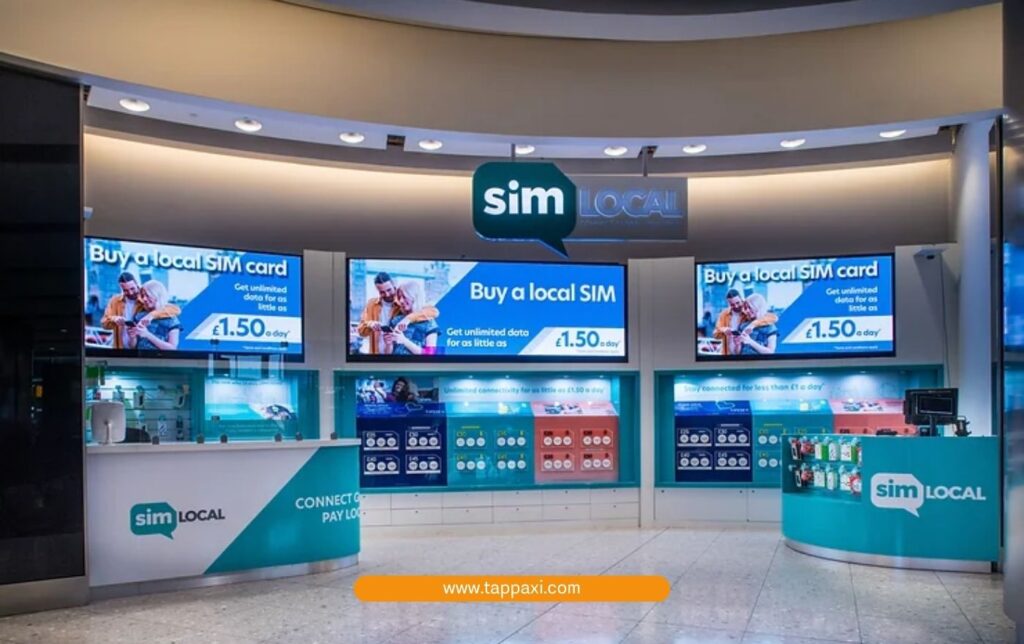
Carriers & Plans
Common options include EE, Three, Vodafone, Lycamobile or giffgaff. If you are just visiting, consider a prepaid bundle (calls+texts+data for a set period). Staff at the kiosk can help activate and install the SIM on the spot, so your phone works immediately.
eSIM
If your phone supports eSIM, some kiosks can activate an eSIM plan instead of physical SIM, saving hassle.
Oyster/Travel Cards
Those same arrivals kiosks sometimes also sell public transport top-up cards like the Visitor Oyster Card or will direct you to the Underground station ticket machines where you can top-up an Oyster card or use contactless for Tube/Elizabeth Line. There are also automated machines in arrivals where you can buy an Oyster card for the Tube.

PARKING & DROP‑OFF CHARGES
If you’re driving to Heathrow or getting dropped off, be prepared for some hefty parking fees and recent drop-off charges. Heathrow’s parking is convenient but not cheap (though there are discounts for disabled badge holders and some grace periods). Let’s break down the key parking options:
Short‑Stay & Long‑Stay Parking Fees
Each terminal has an adjacent multi-story Short Stay car park, ideal for dropping off or meeting arrivals, or stays up to a few hours. These car parks are just a couple minutes’ walk from the terminal entrances. The fees (as of early 2025) for Short Stay are:
- 0–29 minutes: £7.50
- 30–44 minutes: £11.50
- 45–59 minutes: £14.50
- 1–2 hours: £18.50
- 2–3 hours: £22.00
- 3–4 hours: ~£26.50; 4–5 hours: ~£32.00 (and it keeps climbing)
- 6–9 hours: ~£58.50; 9–12 hours: ~£75.00; 24 hours: £94.50
As you can see, short-term parking beyond a few hours becomes extremely expensive. Leaving a car for a full day in Short Stay costs nearly £95. So, Short Stay is intended for quick pickups, drop-offs (if you want to accompany someone in), or very short waits. If you need to park longer than 5–6 hours, you should use Long Stay or other options.
Payment is usually automatic, you take a ticket on entry and pay at a machine or exit barrier by card. You can also use Heathrow’s app or autopay system to pay.
Drive-up Long Stay rates (if you didn’t pre-book) are roughly:
- First day (24 hours): £40.80
- Each additional 24 hours: £32.90 per day thereafter
There’s often an off-peak vs peak rate difference. But £40.80/£32.90 is a good guideline. For example, a 1-week trip would cost around £40.8 + 6*£32.9 ≈ £238 drive-up (though if you pre-book online in advance, you can get much lower rates, sometimes £100/week in non-peak).
Grace period
Long Stay car parks actually allow up to 30 minutes free parking if you just want to drop someone at the shuttle stop or similar. After 30 min, charges apply as above. So technically, you could use Long Stay as a free short-term wait area.
The Long Stay shuttles run every 10-15 minutes, 24/7, and are free. Note which zone you parked in to find your car later (they’re huge lots).
Other Parkings
Heathrow also offers Business Parking (closer lots with more frequent shuttles, priced higher) and Valet/Meet & Greet services. For instance:
- Business Parking costs a bit more than long-stay but less than short-stay; it’s great for 2-3 day trips, with shuttles every 5 minutes.
- Meet & Greet/Valet: You drive to a designated area near the terminal, hand over your keys, and they park your car for you. This costs about £138 for 1 day, £238 for 3 days, then ~£37 per day after. Often used by business travelers who want ultimate convenience.
Unless you live far or have a tight schedule, consider whether taking public transport or a taxi might be cheaper than parking for a long holiday. For example, 2 weeks of parking drive-up could be ~£500, likely more than a taxi both ways for many locations.
Blue Badge & Disability Parking
Heathrow provides some concessions for disabled travelers (Blue Badge holders in the UK):
Short-Stay Parking
Blue Badge holders can use specially reserved bays in Short Stay car parks. If you display your Blue Badge, you are entitled to 30 minutes extra free on top of the standard 2 hours grace when picking up. Actually, Heathrow’s policy is Blue Badge holders do pay short-stay fees but can request assistance.
Long-Stay Parking
Blue Badge holders get 2 hours free parking in Long Stay. The way it works: park in Long Stay, on exit press the intercom and mention your Blue Badge; staff will validate up to 2 hours at no charge. If you exceed 2 hours (but why would you use long stay for under 2h?), normal rates apply after that.
Disabled Facilities
All car parks have disabled bays located near shuttle stops or exits, with ramp access. Heathrow’s shuttles are wheelchair accessible.
If you need assistance from the car park, you can request it via the help intercom or pre-arrange with Heathrow’s special assistance.
(Always carry your Blue Badge with you and show it to any attendants if asking for fee waivers. Heathrow staff are generally helpful when it comes to genuine assistance needs.)
Get Instant Heathrow Airport Taxi Quotes Now
Drop‑Off Charges
One significant change at Heathrow recently is the introduction of a Terminal Drop-Off Charge. Since late 2021, any vehicle dropping off passengers on the terminal forecourts must pay a fee. As of 1 January 2025, the charge is £6 per vehicle per drop-off (it was £5 before, increased to £6 in 2025). How it works:
- The drop-off zones at each terminal are camera-monitored with ANPR (Automatic Number Plate Recognition). There are no pay booths or barriers, your car’s license plate is recorded automatically when you enter.
- You then have to pay the £6 fee online or by phone by midnight the next day after the drop-off. You can also pay in advance of your trip or set up an account/autopay. There are three payment methods:
- Online at the Heathrow drop-off payment site
- Auto Pay account – you register your car and it auto-bills you when you enter
- Telephone automated payment.
You can read our detailed guide on Heathrow drop-off charges.
ULEZ & CONGESTION CHARGES
As of 29 August 2023, London’s ULEZ (Ultra Low Emission Zone) was expanded to cover all London boroughs, which includes Heathrow (which is in Hillingdon). This means if your vehicle does not meet certain emissions standards, you must pay a £12.50 daily ULEZ charge to drive in the zone.
The ULEZ operates 24/7, every day of the year (except Christmas Day) in Greater London. So a trip to Heathrow in a non-compliant car at any time will incur it.
Generally, petrol cars older than ~2005 and diesel cars older than ~2015 are not compliant (they don’t meet Euro 4 for petrol or Euro 6 for diesel). Check your reg on the TfL website to see if you’re exempt. Motorcycles must meet Euro3.
The central London Congestion Charge (£15) does NOT apply to Heathrow. The congestion charge zone is only in central London (inside the Inner Ring Road roughly). Heathrow is way outside that zone. So you do not pay any “Congestion” charge just for going to Heathrow.
(If you drive from Heathrow into central London on a weekday 07:00-18:00, then yes once you hit the zone you pay, but the airport trip itself doesn’t trigger it).
PET TRAVEL & ASSISTANCE ANIMALS
Traveling with animals requires some extra planning at Heathrow, but it’s a pet-friendly airport in many ways. Here’s what to know for pet import/export and service animals:
Pets (Cats, Dogs, Ferrets) Arriving/Departing: The UK has strict pet entry rules (Pet Travel Scheme). Heathrow is one of the few airports with an Animal Reception Centre (HARC) on-site.
If you are bringing a pet through Heathrow Airport (not in cabin, pets must usually travel as manifest cargo in the hold on approved airlines), you must arrange prior approval with the Heathrow Animal Reception Centre at least 72 hours before arrival. This means filing paperwork (proof of microchip, rabies vaccination, health certificate, import form, etc.) ahead of time.
Pets must have a 15-digit ISO microchip implanted before their rabies vaccination, must have a valid rabies vaccination (given at least 21 days before entry), and often a pet passport or official health certificate from a vet.
Assistance Animals (Guide Dogs, Service Dogs)
Heathrow welcomes recognized assistance dogs in the passenger terminals and cabins. If you have a guide dog or other service dog:
- Notify your airline in advance and ensure your dog has the necessary training and documentation (e.g. Assistance Dogs UK ID or equivalent). The airline will confirm the dog can travel in cabin.
- Your assistance dog will need to meet the entry requirements too (microchip, rabies, etc.) just like pets, however, recognized guide dogs can usually use fast-track processing. The Heathrow Animal Reception Centre gives pre-approval for service dogs. You or your airline should arrange this at least 72 hours before flight (they issue a letter of approval). Without it, there could be delays or even quarantine for the dog.
- Once that’s sorted, assistance dogs can stay with you through security, in the cabin during flight, and accompany you in terminal.
- If you’re taking a taxi or car, let them know you have a service animal.
TappAXI Pet Policy
TappAXI do allow pets in vehicles with prior notice. If you’re traveling with a pet, inform us at booking time that you have a pet. They will dispatch a pet-friendly driver. We require the pet to be in an appropriate crate or carrier for the journey (both for safety and to avoid mess in the vehicle). See rules and tips about traveling with pets in UK.
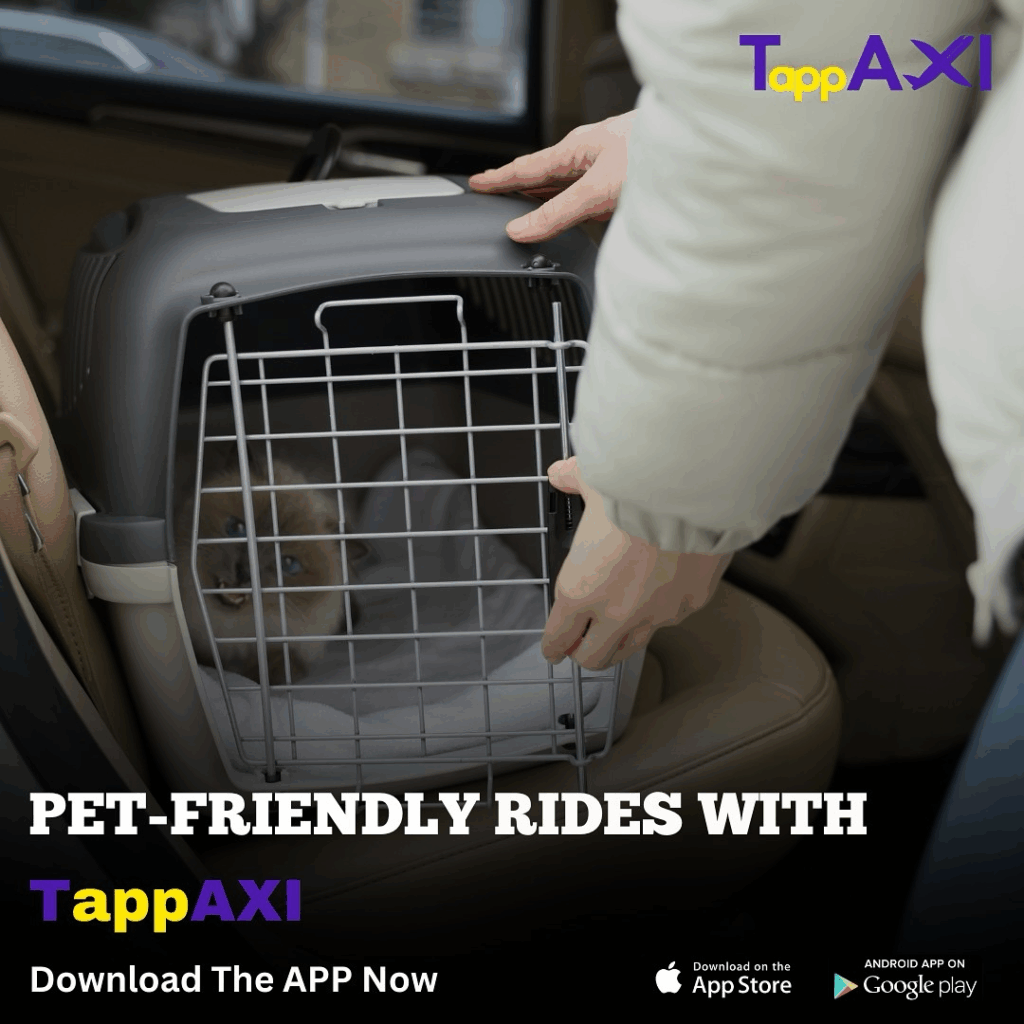
SMOKING & VAPING RULES
Smoking (including e-cigarettes/vaping) is prohibited inside all Heathrow terminals and most other enclosed spaces, by UK law and airport policy. Heathrow enforces a strict no-smoking policy once you are past security. Meaning there are no indoor smoking areas in departures for most terminals, and you cannot smoke or vape anywhere inside.
Each terminal has designated outdoor smoking areas at the curbside or nearby. For example:
- Terminal 2: there’s a smoking zone on the west end of the Departures forecourt (look for signs outside).
- Terminal 3: an area outside the main entrance.
- Terminal 4: outside departures near the drop-off, and one near arrivals forecourt.
- Terminal 5: outside departures level by the far ends of the forecourt.
These are basically portions of sidewalk with smoking bins. You must be in Heathrow smoking area, outside the terminal building. You’ll see “Smoking Area” signs. That’s the only place you can legally light up. Once you go through security, you won’t be able to smoke until you exit at your destination or at Heathrow arrivals (there are no smoking lounges inside).
If you vape, remember that you cannot pack spare lithium batteries or vape devices in checked luggage. Keep them in carry-on due to safety. And obviously no using them on the plane. Some airlines even ban charging them on board.
TRANSFER, LAYOVERS & SLEEPING
If you have a connecting flight at Heathrow or a long layover, you’ll need to go between terminals and possibly kill some time. Heathrow is large, but it’s well set up for transfers with clear signage and shuttles.
Airside Inter-Terminal Transfers
If you arrive on one flight and have a connecting flight in a different terminal, follow the purple signs for “Flight Connections” as you disembark. Heathrow runs dedicated airside transfer buses:
- Between Terminal 2/3 and Terminal 5: After following Flight Connections signs, you’ll go through security screening, then be bussed to the other terminal’s airside. To connect T2/3 ↔ T5, buses run approx every 10 minutes; it’s about a 10-min ride.
- Between Terminal 4 and others: There is a dedicated inter-terminal bus from T4 that goes to T2/3 central, and onward you could catch another to T5 if needed. The process can take longer, perhaps 15-20 minutes to T2/3, plus time to T5 if applicable.
Landside Inter-Terminal Transfers
Train (Free Travel)
The Elizabeth Line and Heathrow Express trains connect Terminal 5 and Terminal 2/3 stations for free. Simply tap a contactless card or get a free inter-terminal ticket from a machine. You won’t be charged as long as you travel between Heathrow stations. There’s also a shuttle train to Terminal 4 from Terminals 2/3 (the train labeled as going to T4).
Buses
There are Heathrow free bus routes around the perimeter. However, since 2021 the free bus zone was removed (except using contactless which charges £0 for Heathrow stops). Better to use the trains for inter-terminal. Quicker and free.
It’s not practical to walk between terminals (except T2 and T3 which are connected by a 10-minute pedestrian tunnel). T4 and T5 are far separated.
Sleeping Options
Aerotel (Terminal 3 Arrivals)
Mentioned earlier, this in-airport hotel is perfect for a quick sleep without leaving the airport. They have overnight rates and day-use rates.
Example: landing at 5am and connecting next morning. You could book an Aerotel for the day to sleep. It’s landside at T3, so if you’re in T5 you’d have to transfer over (note: not ideal if you have checked bags, you’d have to claim them and carry to T3). But for certain itineraries it’s great. No formal check-out times in the morning since you book by hours.
Onsite Hotels connected to terminals
Sofitel London Heathrow
The Sofitel London Heathrow at Terminal 5 is a 5-star hotel directly connected to T5 by a covered walkway (about 5-10 minutes indoor walk from T5 Arrivals). Very convenient for T5 flights.
Hilton Garden Inn at T2/T3
Opened recently, this hotel is adjacent to Terminal 2 (and walkable from T2 via a link bridge). It also can access Terminal 3 by a 10-minute walk (or via the Heathrow Express tunnel route).
Crowne Plaza and Holiday Inn Express at Terminal 4
Both are connected to T4 via a covered walkway. Good for overnight if flying out of T4 early; they offer free transit to other terminals via Heathrow Express (since T4 station is walking distance).
Other Nearby Hotels
There are many on Bath Road (north side) and around perimeter, e.g. Premier Inn, Marriott, Sheraton, Hilton (at T5 separate from Sofitel), etc. These are not walking distance but reachable by taxi or Hotel Hoppa shuttle bus. A budget-friendly one is Premier Inn on Bath Road which often has rooms ~£60 and is a short taxi ride from T2/3.
Sleeping in Terminals (overnight)
Heathrow technically closes to departing passengers at night (no flights between ~11:30pm and 4:30am). But if you’re stuck overnight, Terminal 2 and 5 have some seating where you can rest. Security usually won’t let you through to airside until early morning if there’s no flight.
Landside of T2 and T3 have been known to have overnight campers, but it’s not particularly comfortable, armrest benches and bright lights. Airport staff may ask for your flight info. It’s generally safe though (CCTV everywhere).
Families not recommended to overnight in terminal with kids, better get a hotel.
If you do try to sleep in a quiet corner, have a travel blanket/eye mask. Terminal 5 arrivals seating area might be quieter at night.
Get Instant UK Airport Taxi Quotes Now
ACCESSIBILITY & WHEELCHAIR ASSISTANCE
Heathrow strives to be accessible to all passengers. It’s crucial to request wheelchair or special assistance at least 48 hours before your flight. You should do this through your airline or tour operator, though you can also inform Heathrow directly.
When booking your ticket or at least a few days prior, contact the airline’s special assistance line and specify what help is needed (e.g. wheelchair from check-in to gate, help through security, etc.) . They will coordinate with Heathrow’s assistance service.
When you arrive, look for the clearly marked Special Assistance points. Each terminal has an assistance desk or call point in the departure hall. For example, at T5 it’s to the side of the entrance. There, staff can meet you with a wheelchair or buggy. If you’ve pre-booked, they’ll be expecting you (but even if not, they will accommodate you as soon as possible).
SECURITY & IMMIGRATION CONTACT
Security Screening
Standard airport security rules apply (100ml liquids in a clear bag, electronics out, etc.). Heathrow’s security queues are usually efficient, in 2024 they reported stable wait times, with most passengers <5 minutes in line. If you’re in First/Business or a premium status, you can use Fast Track lanes which are generally quicker. Families or those needing assistance have separate lanes too.
One tip: If you have multiple electronics, consider getting a screening tray for each to avoid piling (some LHR lanes even allow laptops to stay in bag due to new scanners, it’s evolving). Always listen to staff instructions, they are polite but strict.
Immigration (Passport Control)
When arriving to the UK, you’ll face Border Force. Eligible nationals (UK, EU/EEA, US, Canada, Australia, NZ, Singapore, Japan, South Korea, etc.) can use the automated eGates if they have a biometric e-passport and are age >12 (with some conditions). These eGates scan your face and passport, usually pretty quick. If successful, you’re through in seconds. If it spits you out you’ll be directed to an officer.
Customs
After passport control, you collect bags then pass through customs channel (green if nothing to declare). Customs rarely stops people randomly, but they do have enforcement presence. If you have goods over allowances, go red channel.
Contacting Border Force
As a passenger, there is no direct public phone number for UK Border Force at Heathrow that you can easily call for status on something. If you left something with them or have an immigration issue, you typically should contact via gov.uk channels.
For general inquiries while at LHR, you can approach the Information Desk in Arrivals and they might be able to guide you if the query is general. Airlines can sometimes liaise if it’s about a missing visa issue etc., but Border Force doesn’t have a helpdesk for passengers.
PASSENGER RIGHTS & COMPENSATION
Air travel doesn’t always go to plan, delays and cancellations happen. As a passenger departing from Heathrow (or arriving to Heathrow on a UK/EU carrier), you have certain protections under UK law (mirrored after EU Regulation 261/2004).
Flight Delays
If your flight arrives at its destination 3 or more hours late, and the cause is within the airline’s control (i.e. not weather or air traffic control strikes etc.), you are likely entitled to a fixed compensation. The amount depends on the flight distance:
- Short flights (<1500 km): about £220 (€250)
- Medium flights (1500–3500 km): ~£350 (€400)
- Long flights (>3500 km): ~£520 (€600)
Note: The range “£110–£520” often cited is because if a long flight is 3-4 hours late the compensation might be 50% (there are some tiered rules). But generally, 3+ hour delay on a long-haul = full £520. The airline should pay in cash or bank transfer within a few weeks of a valid claim.
Cancellations
If your flight is canceled, the airline must offer you either a full refund or re-routing (alternative flight). If cancellation was last-minute (within 14 days of departure) and within airline’s control, you may also get compensation similar to above, on top of refund or reroute.
Duty of Care
Duty of Care: Regardless of cause, if you are delayed over 2 hours (for short haul) or 3-4 hours (longer haul), the airline must provide meals and refreshments. Usually they give meal vouchers or direct you to a cafe. If an overnight delay occurs, they must provide hotel accommodation and transport to it. So don’t be shy to ask, this is your right. Keep receipts if they tell you to spend and claim later.
FAQs
How early should I arrive at Heathrow before my flight?
Aim for at least 3 hours before an intercontinental flight, and 2 hours before a short-haul European or domestic flight.
Which terminal does British Airways use at Heathrow?
British Airways mostly use Terminal 5. T5 is BA’s main hub (and also houses Iberia and some American Airlines flights). However, BA also operates from Terminal 3 for certain flights, especially some European and mid-haul routes and Oneworld partner connections
Is the drop‑off charge mandatory for all vehicles?
Yes, every vehicle dropping off passengers at a Heathrow terminal must pay the £6 charge (as of 2025). There are no exemptions except Blue Badge disabled drivers who pre-register, motorcycles, and certain emergency vehicles
Is Heathrow in the ULEZ zone? Do I have to pay an emissions charge?
Yes, Heathrow is within Greater London’s ULEZ. If your car is not ULEZ-compliant (typically older diesel or petrol), you must pay the £12.50 daily ULEZ charge to drive to Heathrow.
Where can I store my luggage at Heathrow?
Each terminal has a Left Luggage office (baggage storage) in the Arrivals area. The service is operated by Excess Baggage Co. You can store bags for a few hours or days. Example fees: around £15 per bag for up to 24 hours.
Can I smoke or vape anywhere at Heathrow?
Only in designated outdoor areas. Smoking and vaping are completely banned inside terminals (including after security) except for two small outdoor terraces in T2 and T4.
What is Heathrow’s postcode for GPS navigation?
Heathrow covers a large area with different postcodes per terminal. A commonly used one is TW6 1AP, which is the Terminal 1 (now closed) postcode, but it brings you to the central terminal area:
- Terminal 2: TW6 1EW
- Terminal 3: TW6 1QG
- Terminal 4: TW6 3XA
- Terminal 5: TW6 2GA

